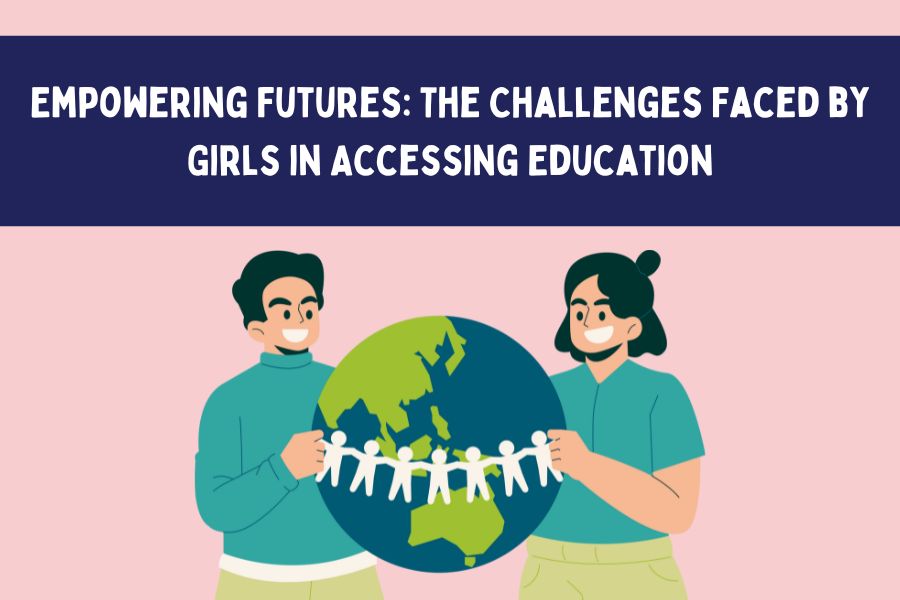The journey of a girl child towards education in India is filled with numerous challenges—some rooted in societal norms and others in economic conditions. While education is a fundamental right, many girls still struggle to access quality learning due to factors like poverty, gender-based discrimination, early marriages, and a lack of infrastructure in rural areas. Despite growing awareness, millions of young girls are forced to drop out of school or are never enrolled in the first place. This creates a ripple effect, impacting not just the individual but the entire community by limiting potential and growth.
Barriers Beyond Classrooms: Social and Cultural Challenges
One of the most pressing challenges to girls’ education lies in deeply entrenched cultural beliefs. In many rural areas, education for boys is prioritized, while girls are expected to stay home and handle domestic responsibilities. Safety concerns, lack of nearby schools, and menstrual hygiene issues further contribute to absenteeism and dropouts. For families with limited resources, investing in a girl’s education is often seen as a low priority, especially when she is expected to marry early or assist in household labor. These patterns are not just anecdotal—they reflect broader social norms that need continuous attention and transformation.
Infrastructure and Accessibility Gaps in Rural India
Infrastructure plays a major role in educational inclusivity. Schools without proper classrooms, functional toilets, or clean drinking water disproportionately affect girls. A lack of separate toilets and hygiene facilities is one of the leading reasons for girls dropping out once they reach puberty. Moreover, long travel distances without secure transportation options create another barrier. Government initiatives have made efforts to address these issues, but much remains to be done to ensure that schools are both safe and welcoming spaces for girls, especially in underdeveloped regions of India.
Why Economic Constraints Limit Educational Access
Economics play a significant role in determining who gets to learn. For many families living below the poverty line, education is seen as an expense rather than an investment. Uniforms, school supplies, transport costs, and mid-day meals all add up. In these households, the financial burden often results in sending only boys to school. This is where education schemes for girls in India become extremely important, offering incentives like scholarships, free materials, and monetary support to encourage continued learning. These schemes play a vital role in bridging the gap, allowing girls from marginalized communities to step into classrooms without being a burden on their families.
The Role of Awareness and Community Engagement
Changing mindsets requires more than just financial aid. Awareness campaigns and grassroots movements play a key role in breaking down stereotypes and encouraging education for all. Parents need to understand the long-term benefits of educating their daughters—not just for employment, but for better health, improved family planning, and social mobility. Community involvement through local influencers, teachers, and village leaders can significantly shift perceptions, helping create an environment that supports and values education for girls. Empowered communities ultimately lead to empowered girls.
Digital Divide and the Pandemic’s Impact
The COVID-19 pandemic exposed the stark digital divide in India’s education system. While many schools transitioned to online learning, millions of girls in rural and low-income households were left behind due to lack of devices, internet access, or digital literacy. Many girls took on domestic responsibilities or were pushed into early marriages during this time. The setback from those two years is still being felt, especially in areas where recovery mechanisms have been slow. Addressing this divide is now critical to ensure equal learning opportunities moving forward.
Grassroots Initiatives Making a Difference
While government schemes are crucial, the role of civil society cannot be overstated. There are countless grassroots organizations working tirelessly to bridge the educational gap. A well-established education NGO in India often focuses on providing holistic support—ranging from school enrollment drives to after-school tutoring and health awareness sessions. These NGOs build trust with local communities, often becoming the bridge between public systems and underprivileged families. Their role in facilitating consistent education and offering a safe learning environment has been vital, especially in areas where government resources fall short.
Long-Term Impact of Educating Girls
Educating girls doesn’t just change individual lives—it transforms entire communities. Women with education tend to marry later, have fewer and healthier children, earn more, and invest back into their families and communities. This creates a generational shift, where the value of education is passed on and the cycle of poverty is slowly broken. In broader economic terms, closing the gender education gap contributes significantly to GDP growth, workforce participation, and national development. It’s not just a moral imperative—it’s a strategic one.
Conclusion: Reimagining an Equal Learning Landscape
The path to universal education in India is incomplete without addressing the unique challenges faced by girls. From infrastructure and poverty to societal mindset and post-pandemic digital access, each layer must be addressed thoughtfully. While government schemes and NGO efforts have laid down a strong foundation, sustained awareness and inclusive policy-making are key to moving forward. Only when every girl has the opportunity to learn, thrive, and contribute, can we truly say we’ve built a just and equal educational system.

